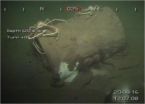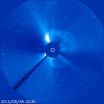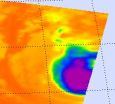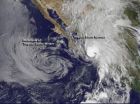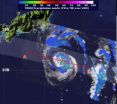(Press-News.org) (SACRAMENTO, Calif.) — UC Davis investigators have found new evidence that a promising type of stem cell now being considered for a variety of disease therapies is very similar to the type of cells that give rise to cancer. The findings suggest that although the cells -- known as induced pluripotent stem cells (iPSCs) -- show substantial promise as a source of replacement cells and tissues to treat injuries, disease and chronic conditions, scientists and physicians must move cautiously with any clinical use because iPSCs could also cause malignant cancer.
The article, "Induced pluripotency and oncogenic transformation are related processes," is now online in the journal, Stem Cells and Development.
"This is the first study that describes the specific molecular pathways that iPSCs and cancer cells share from a direct comparison" said Paul Knoepfler, associate professor of cell biology and human anatomy, and principal investigator of the study. "It means that much more study is required before iPSCs can be used clinically. However, our study adds to a growing knowledge base that not only will help make stem cell therapies safer, but also provide us with new understandings about the cancer-causing process and more effective ways to fight the disease."
Since 2007, cell biologists have been able to induce specialized, differentiated cells (such as those obtained from the skin or muscle of a human adult) to become iPSCs. Like embryonic stem cells, iPSCs are a type of stem cell that is able to become any cell type. This "pluripotent" capability means that iPSCs have the potential of being used in treatments for a variety of human diseases, a fundamentally new type of clinical care known as regenerative medicine.
iPSCs are considered particularly important because their production avoids the controversy that surrounds embryonic stem cells. In addition, iPSCs can be taken from a patient's own skin and induced to produce other needed tissues, thereby evading the possibility of immunologic rejection that arises when transplanting cells from a donor to a recipient. In contrast to therapies based on ES cells, iPSCs would eliminate the need for patients to take immunosuppressive drugs.
Earlier research indicated that both ES cells and iPSCs pose some health risks. Increasing evidence suggests that pluripotency may be related to rapid cellular growth, a characteristic of cancer. iPSCs, as well as embryonic stem cells, are well known by scientists to have the propensity to cause teratomas, an unusual type of benign tumor that consists of many different cell types. The new UC Davis study demonstrates for the first time that iPSCs -- as well as ES cells -- share significant similarities to malignant cancer cells.
The investigators compared iPSCs to a form of malignant cancer known as oncogenic foci that are also produced in laboratories; these cell types are used by medical researchers to create models of cancer, particularly sarcoma. Specifically, the scientists contrasted the different cells' transcriptomes, comprised of the RNA molecules or "transcripts." Unlike DNA analysis, which reflects a cell's entire genetic code whether or not the genes are active, transcriptomes reflect only the genes that are actively expressed at a given time and therefore provide a picture of actual cellular activity.
From this transcriptome analysis, the investigators found that the iPSCs and malignant sarcoma cancer cells are unexpectedly similar in several respects. Genes that were not expressed in iPSCs were also not expressed in the cancer-generating cells, including many that have properties that guide a cell to normally differentiate in certain directions. Both cell types also exhibited evidence of similar metabolic activities, another indication that they are related cell types.
"We were surprised how similar iPSCS were to cancer-generating cells," said Knoepfler. "Our findings indicate that the search for therapeutic applications of iPSCs must proceed with considerable caution if we are to do our best to promote patient safety."
Knoepfler noted, for example, that future experimental therapies using iPSCs for human transplants would most often not involve implanting iPSCs directly into a patient. Instead, iPSCs would be used to create differentiated cells -- or tissues -- in the laboratory, which could then be transplanted into a patient. This approach avoids implanting the actual undifferentiated iPSCS, and reduces the risk of tumor development as a side effect. However, Knoepfler noted that even trace amounts of residual iPSCs could cause cancer in patients, a possibility supported by his team's latest research.
Encouragingly, the UC Davis team also found important differences between the cell types that could provide clues to making iPSCs safer. As part of this study, the researchers transformed tumor-generating cell types into iPS-like cells by manipulating their genetic make up. Although the reprogrammed cancer cells did not behave identically to iPSCs, and had reduced ability to produce different cell types, the findings are exciting because they suggest that cancer cells can be reprogrammed into more normal cell types, possibly opening the door to new cancer therapies.
"We found that we could reprogram the cancer cells to behave more akin to normal stem cells," said Knoepfler. "This suggests that such cancer cell reprogramming could become a new way of treating cancer patients, in essence telling their tumors to turn into normal stem cells."
Knoepfler said the team is continuing to study the differences and similarities between iPSCs and cancer cells, as well as investigate possible ways to make iPSCs safer. It appears that targeting specific metabolic pathways may enhance iPSC formation, while modulating other pathways may improve safety.
###
Other study authors are John Riggs, Bonnie Barrilleaux, Natalia Varlakhanova, Kelly Bush and Vanessa Chan, all of the UC Davis Department of Cell Biology and Human Anatomy.
The study was funded by grants from the California Institute for Regenerative Medicine and from the National Institutes of Health (NIH grant 5R01GM100782-01).
UC Davis is playing a leading role in regenerative medicine, with nearly 150 scientists working on a variety of stem cell-related research projects at campus locations in both Davis and Sacramento. The UC Davis Institute for Regenerative Cures, a facility supported by the California Institute for Regenerative Medicine (CIRM), opened in 2010 on the Sacramento campus. This $62 million facility is the university's hub for stem cell science. It includes Northern California's largest academic Good Manufacturing Practice laboratory, with state-of-the-art equipment and manufacturing rooms for cellular and gene therapies. UC Davis also has a Translational Human Embryonic Stem Cell Shared Research Facility in Davis and a collaborative partnership with the Institute for Pediatric Regenerative Medicine at Shriners Hospital for Children Northern California. All of the programs and facilities complement the university's Clinical and Translational Science Center, and focus on turning stem cells into cures. For more information, visit www.ucdmc.ucdavis.edu/stemcellresearch.
Researchers find multiple similarities between cancer cells and induced pluripotent stem cells
Findings have important implications for helping scientists create safer stem cell therapies and may open door to new cancer therapies
2012-09-29
ELSE PRESS RELEASES FROM THIS DATE:
New method monitors semiconductor etching as it happens -- with light
2012-09-29
CHAMPAIGN, Ill. — University of Illinois researchers have a new low-cost method to carve delicate features onto semiconductor wafers using light – and watch as it happens.
"You can use light to image the topography and you can use light to sculpture the topography," said electrical and computer engineering professor Gabriel Popescu. "It could change the future of semiconductor etching."
Chip makers and semiconductor researchers need to very precisely control the dimensions of their devices. The dimensions of the components affect performance, speed, error rate and time ...
Tadpole shrimp a new pest of rice in the midsouthern United States
2012-09-29
Tadpole shrimp are pests of rice production systems in California and have recently been found impacting Missouri and Arkansas rice fields. The shrimp feed on rice seedlings and uproot them during foraging, and their foraging behavior causes water to become muddy, which reduces light penetration to submerged seedlings and delays the development of the rice plant.
In "Review of a New Pest of Rice, Tadpole Shrimp (Notostraca: Triopsidae), in the Midsouthern United States and a Winter Scouting Method of Rice Fields for Preplanting Detection," a new open-access article appearing ...
Bored? Researchers shed light on why
2012-09-29
This gives new meaning to the complaint "I'm bored" — literally.
Canadian researchers — including a professor from the University of Guelph — have come up with a new, precise definition of boredom based on the mental processes that underlie the condition.
Although many people may see boredom as trivial and temporary, it actually is linked to a range of psychological, social and health problems, says Guelph psychology professor Mark Fenske. He's among authors of a new study in Perspectives on Psychological Science, published by the Association for Psychological Science.
Boredom ...
Time bomb: Military ordnance in Gulf poses threat to shipping, says Texas A&M proffesor
2012-09-29
Millions of pounds of unexploded bombs and other military ordnance that were dumped decades ago in the Gulf of Mexico, as well as off the coasts of both the Atlantic and Pacific oceans, could now pose serious threats to shipping lanes and the 4,000 oil and gas rigs in the Gulf, warns two Texas A&M University oceanographers.
William Bryant and Neil Slowey, professors of oceanography who have more than 90 years of combined research experience in all of the Earth's oceans, along with fellow researcher Mike Kemp of Washington, D.C., say millions of pounds of bombs are scattered ...
IUCN adopts new 'Green List' to show species on the path to conservation success
2012-09-29
The IUCN World Conservation Congress has adopted a motion sponsored by the Wildlife Conservation Society and partners to create a Green List to assess conservation success. The Green List for Species would include species identified as 'fully conserved,' which are those that exist in ecologically significant numbers, interacting fully with other species in their ecosystems.
The motion was adopted at the World Conservation Congress, which was held this month in Jeju, Republic of Korea.
The aim of the Green List is to highlight species that are thriving parts of a healthy ...
NASA sees super Typhoon Jelawat Affecting Japan
2012-09-29
Super Typhoon Jelawat is a large and powerful storm that has been bringing very rough seas to areas in the western North Pacific. NASA's Terra satellite passed over the monster storm and captured a visible image as it nears the big island of Japan.
NASA's Terra satellite passed over Super Typhoon Jelawat on Sept. 28 at 0238UTC (10:38 p.m. EDT, Sept. 27) and the Moderate Resolution Imaging Spectroradiometer captured an infrared image as the storm approaches Okinawa, Japan.
Jelawat's center passed by Ishigaki-jima by 1500 UTC (11 a.m. EDT) on Sept. 28 and was approaching ...
NASA sees sun unleash a wide, but benign, CME
2012-09-29
The sun erupted with a wide, Earth-directed coronal mass ejection (CME) on Sept. 27, 2012 at 10:25 p.m. EDT. CMEs are a phenomenon that can send billions of tons of solar particles into space that can reach Earth one to three days later, affecting electronic systems in satellites and on the ground. Experimental NASA research models estimate that the CME is traveling at around 700 miles per second and will reach Earth on Sept. 29.
CMEs of these speeds are usually benign. In the past, similar CMEs have caused auroras near the poles but have not caused disruption to electrical ...
NASA sees stubborn Nadine intensify into a hurricane again
2012-09-29
Infrared data from NASA's Aqua satellite today, Sept. 28, revealed strong convection and thunderstorms have built up again in Tropical Storm Nadine as it moved over warm waters in the Eastern Atlantic Ocean. That convection strengthened Nadine back into a hurricane today. Nadine has lasted over two weeks, but is nowhere near breaking the record for longest-lived tropical cyclone.
NASA's Aqua satellite passed over long-lived Nadine on Sept. 28 at 0441 UTC (12:41 a.m. EDT) when it was still a tropical storm and the Atmospheric Infrared Sounder (AIRS) instrument captured ...
NASA sees Tropical Storm Miriam takes final bow, replaced by Norman
2012-09-29
The National Hurricane Center issued their last advisory on Miriam on Sept. 27 at 11 p.m. EDT when it became a remnant low pressure area. At that time, the center of post-tropical cyclone Miriam was located near latitude 22.0 north and longitude 116.7 west, just over 400 miles west of the southern tip of Baja California. Miriam had maximum sustained winds near 30 knots (35 mph/55 kmh).
NOAA's GOES-15 satellite captured an infrared image of Tropical Storm Miriam and a developing low pressure area in the Eastern Pacific on Sept. 28 at 1145 UTC (7:45 a.m. EDT), off the coast ...
NASA sees many things happening in Tropical Storm Ewiniar
2012-09-29
There are a number of things happening under the hood of Tropical Storm Ewiniar's clouds that have been deciphered by satellite data today, Sept. 28, 2012, and NASA's TRMM satellite has noticed one area of heavy rainfall remaining.
NASA's Tropical Rainfall Measuring Mission (TRMM) satellite noticed light to moderate rainfall around most of the tropical storm, with the heaviest rainfall east of the center of circulation. Rainfall in that area was falling at a rate of 2 inches (50 mm) per hour).
Tropical Storm Ewiniar has a partially exposed low-level circulation center, ...
LAST 30 PRESS RELEASES:
Making lighter work of calculating fluid and heat flow
Normalizing blood sugar can halve heart attack risk
Lowering blood sugar cuts heart attack risk in people with prediabetes
Study links genetic variants to risk of blinding eye disease in premature infants
Non-opioid ‘pain sponge’ therapy halts cartilage degeneration and relieves chronic pain
AI can pick up cultural values by mimicking how kids learn
China’s ecological redlines offer fast track to 30 x 30 global conservation goal
Invisible indoor threats: emerging household contaminants and their growing risks to human health
Adding antibody treatment to chemo boosts outcomes for children with rare cancer
Germline pathogenic variants among women without a history of breast cancer
Tanning beds triple melanoma risk, potentially causing broad DNA damage
Unique bond identified as key to viral infection speed
Indoor tanning makes youthful skin much older on a genetic level
Mouse model sheds new light on the causes and potential solutions to human GI problems linked to muscular dystrophy
The Journal of Nuclear Medicine ahead-of-print tip sheet: December 12, 2025
Smarter tools for peering into the microscopic world
Applications open for funding to conduct research in the Kinsey Institute archives
Global measure underestimates the severity of food insecurity
Child survivors of critical illness are missing out on timely follow up care
Risk-based vs annual breast cancer screening / the WISDOM randomized clinical trial
University of Toronto launches Electric Vehicle Innovation Ontario to accelerate advanced EV technologies and build Canada’s innovation advantage
Early relapse predicts poor outcomes in aggressive blood cancer
American College of Lifestyle Medicine applauds two CMS models aligned with lifestyle medicine practice and reimbursement
Clinical trial finds cannabis use not a barrier to quitting nicotine vaping
Supplemental nutrition assistance program policies and food insecurity
Switching immune cells to “night mode” could limit damage after a heart attack, study suggests
URI-based Global RIghts Project report spotlights continued troubling trends in worldwide inhumane treatment
Neutrophils are less aggressive at night, explaining why nighttime heart attacks cause less damage than daytime events
Menopausal hormone therapy may not pose breast cancer risk for women with BRCA mutations
Mobile health tool may improve quality of life for adolescent and young adult breast cancer survivors
[Press-News.org] Researchers find multiple similarities between cancer cells and induced pluripotent stem cellsFindings have important implications for helping scientists create safer stem cell therapies and may open door to new cancer therapies

